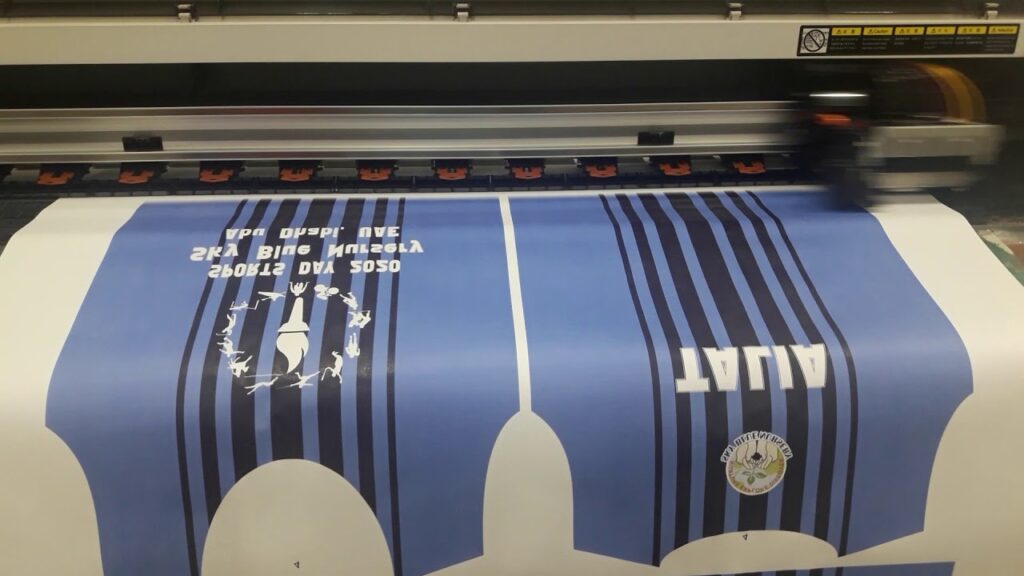Style Yourself? You Have to Know
Dress style is a key component that affects interpersonal relationships unconsciously. Therefore, using the cloth to be part of your language is very important. Compared with purchasing clothes in the shopping mall, sublimation paper helps you design your shirt and dress up in your style.
What is the sublimation paper?
Sublimation paper is a special printing paper that absorbs and retains ink. It consists of white paper and a special polyester coating which is the key to keeping the ink inside the paper. After heating, the paper will release ink and print indirectly on the material, such as a T-shirt, canvas bag, mouse pad, etc.
Sublimation paper performs a fast and easy way to create your personalized T-shirts and other goods. No matter whether you are a beginner, a home crafter, or a professional printer, everyone can use this process. However, if you want to ensure that your best sublimation paper gets high-quality results, you need to know a little bit about how this best sublimation paper works and the best way to use it. There is self adhesive vinyl for your choosing!
Now, let’s started to use sublimation paper to style your shirt!
How to sublimate a shirt?
Step1: Design your creative ideas on the computer and mirror them before printing.
Step2: Printing. Only uses an inkjet printer with sublimation ink to print on the white side of the paper and wait for the image to dry.
Step3: Ironing. Preheat the iron. Then press on the shirt to moisture and remove wrinkles. Then, make the printed image face to the fabric and start the process.
Step4: Remove the heat press and peel off the coating.
How to choose sublimation paper
When choosing a sublimation paper for beginners, you need to keep in mind some key features:
1. Weight:
Better to choose 110-120 gsm. Since the paper is easy to damp with high humidity, it will become softer and stiff that is weaker at the same time. If it is a low-weight paper, it will be hard to print smoothly because the stiffness and hardness go down. Besides, the more weight it is, the more ink can accept, and the hard to fade.
2. Transfer rate:
This is the most important factor, or your design will be failed. It is about the quality of the coating paper which has to accept the sublimation ink from the printer, carry the ink from the printer to the heat press, and transfer ink from the paper to the product.
3. Drying speed:
Look for the description “quick-dry” or “fast-drying” and read reviews.
If your sublimation paper fails to perform in any of these areas, your results will be compromised; usually observed as blurry, shadowy, ghosting, or inability to get deeply saturated color.
The best sublimation paper for DIY
For beginners and experts, it is highly recommended the HTVRONT Sublimation Paper
1. Higher Transfer Rate & Vibrant Colors:
With over 98% ultra-high transfer rate, clear and bright colors, and excellent printing details, this sublimation paper is your go-to paper for creative projects. You will also love its very fast drying and greater ink-saving performance.
2. Premium Quality:
120gsm sublimation paper for heat transfer is tough enough to withstand repeated washes, high temperatures, and sunshine without cracking, fading, and wrinkling. Sublimation paper for cotton features superior line sharpness, excellent lay-flat performance, and outstanding quality consistency.
3. Wide Application:
Sublimation paper can be a breeze to transfer your favorite images onto a wide surface such as T-shirts, pillows, canvas bags, ceramic mugs, phone cases, puzzles, metal plates, key chains, etc. Perfect for special occasions and seasonal crafts plus everyday celebrations!
4. Warm Tips:
HTVRONT sublimation paper is compatible with t-shirts with all inkjet printers, but only sublimation ink works. It works well with light-colored polyester fabric, polyester-coated items, and materials with cotton content≤30%. It must be stored in a cool, dry area, and avoid direct sunlight, heat, and humidity.




More Stories
Top 5 Reasons Why Buying a Star Is the Most MeaningfulGift
Loan Advising in 2025: Stop Guessing, Start Borrowing Smart
How Much Does Car Recovery Cost in the UK?